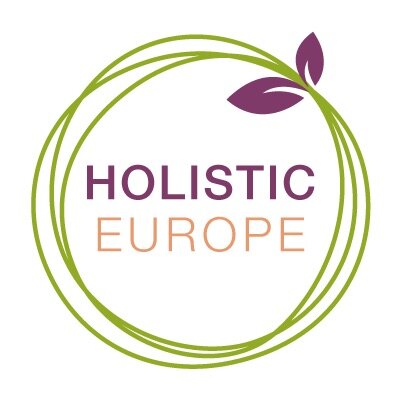Blue
Rainbow Of Your Life series
“Blue is the favourite colour of all people”, was the first sentence I came across when researching for this article. “Hold on”, I was thinking, “My favourite colour is green”. Then I opened my Address Book where I keep notes about my friends’ favourite things (as an inspiration for birthdays or Christmas or “whatever-else" gifts) and started laughing. Blue is the favourite colour of all friends I had this info available for!
As you know by now, blue is a primary colour for both, artists and scientists.
It is the colour of the sky, of the oceans. But why? The water and the air are clear. It is because although the sunlight has many colours, they get scattered when they reach the Earth’s atmosphere. The colours with shorter wavelengths (violet and blue) get scattered more, so more of them reach our eyes. There is much more of the colour blue in the sunlight than there is violet though and that is why we see the sky as blue. With the oceans it is similar but the dominant factor, in this case, is the colour absorption by the water. The water absorbs the long-wavelength colours much more than the colour blue. The colour of the ocean varies depending on how deep the ocean is (the deeper it is, the darker the blue is) and on what particles are present in the water. Areas with a lot of phytoplankton appear more green than blue, for example, because the chlorophyll absorbs the reds and the blues and reflects the colour green.
The colour blue is quite rare in nature. Plants get their blue colour from anthocyanins. They provide a range of colours from dark red to blue, indigo, and deep violet. The name comes from the Greek words Xanthos (for flower) and Kyanos (for blue).
Blue/purple fruit and vegetables too have antioxidant and anti-inflammatory properties and may be beneficial in particular for the brain, heart, urinary tract as well as lowering the risk of certain cancers or diabetes.
In the main article “Rainbow of your Life”, we already spoke about the uses of colour in the animal world but how do certain species obtain the colour blue? Not through the diet as blue colour food is more or less non-existent. Many animals create structures to change the wavelength of light or use light-scattering, a process we spoke about with regards to the BLUE sky.
The colour blue is very popular all around the world, maybe because it is so rare and precious. Its name was the last to be created after all the other colours of the rainbow. Some ancient tribes have only one word for the colours blue and green. The Egyptians are considered to have popularised the colour blue. They used blue pigment from a semiprecious stone called Lapis and developed blue dyes which they then passed on to other nations, other cultures.
What does the colour blue mean in various religions? In Christianity, it became popular in the 12tth century when blue stained glass windows coloured with cobalt were used in the Basilica of Saint-Denis in Paris and took the Christian world by storm. A little later, in the 13th century, the catholic church demanded that painters used the colour blue to depict the cloak of the Virgin Mary as it was the most precious pigment. The colour blue as a symbol of heaven and truth is associated with holiness, humility and virtue.
In Hinduism, the colour blue stands for bravery and strong character. In Buddhism, it symbolises infinity and although the colour blue is also associated with anger, it may be transformed into wisdom when meditating on it. The Quran only mentions the colour blue once and in early Islam it was perceived as a colour of foreigners, of sin and it was seen as magical and inauspicious.
In psychology, the colour blue is mostly associated with wisdom, peace, trust, loyalty or calmness and it is very popular in marketing. It is mentally stimulating and there are also studies looking into its ability to increase productivity for example. On the other hand, the colour blue is the least appetising and research shows that people eat less when their food is served on blue plates. Another negative connotation comes from the phrase “feeling blue” which may have originated from Greek mythology when god Zeus would make it rain when he was sad or from an old naval custom of flying blue flags upon return to homeport if its captain had perished during the voyage.
From a science point of view, the colour blue has a shorter wavelength than other colours - between 450 and 495 nanometers. Higher frequency blues and therefore those with shorter wavelength look more violet, those with a lower frequency, on the opposite side of the colour spectrum, appear greener. Look for a true blue right in the middle of the wavelength range.
Hope that you found some interesting facts in this article and wishing that you are not feeling BLUE too often.
If you want to dive a bit deeper and learn how to use colours to your benefit in various aspects of your life (healthy food, work performance, personal appearance, home, outdoor activities), join us at our Rainbow of your life webinar. Check the available dates on our Events page.
Resources
1 https://www.colormatters.com/
2 https://www.metoffice.gov.uk/
Why is the sky blue?
Ocean colour
4 https://www.thespruceeats.com/
What Are Anthocyanins by Garrett McCord
5 http://www.colorsofhealth.com/
6 https://sciences.adelaide.edu.au/
Why is the colour blue so rare in nature by Sam Le Gallou
7 https://www.dunnedwards.com/
The Color Blue: History, Science, Facts
9 https://www.sherwin-williams.com/
10 Clothing and Colours in Early Islam by Hadas Hirsch
11 https://www.colorpsychology.org/
The Relationship Between Food and Color by Kalim Hussaini
Feeling blue
